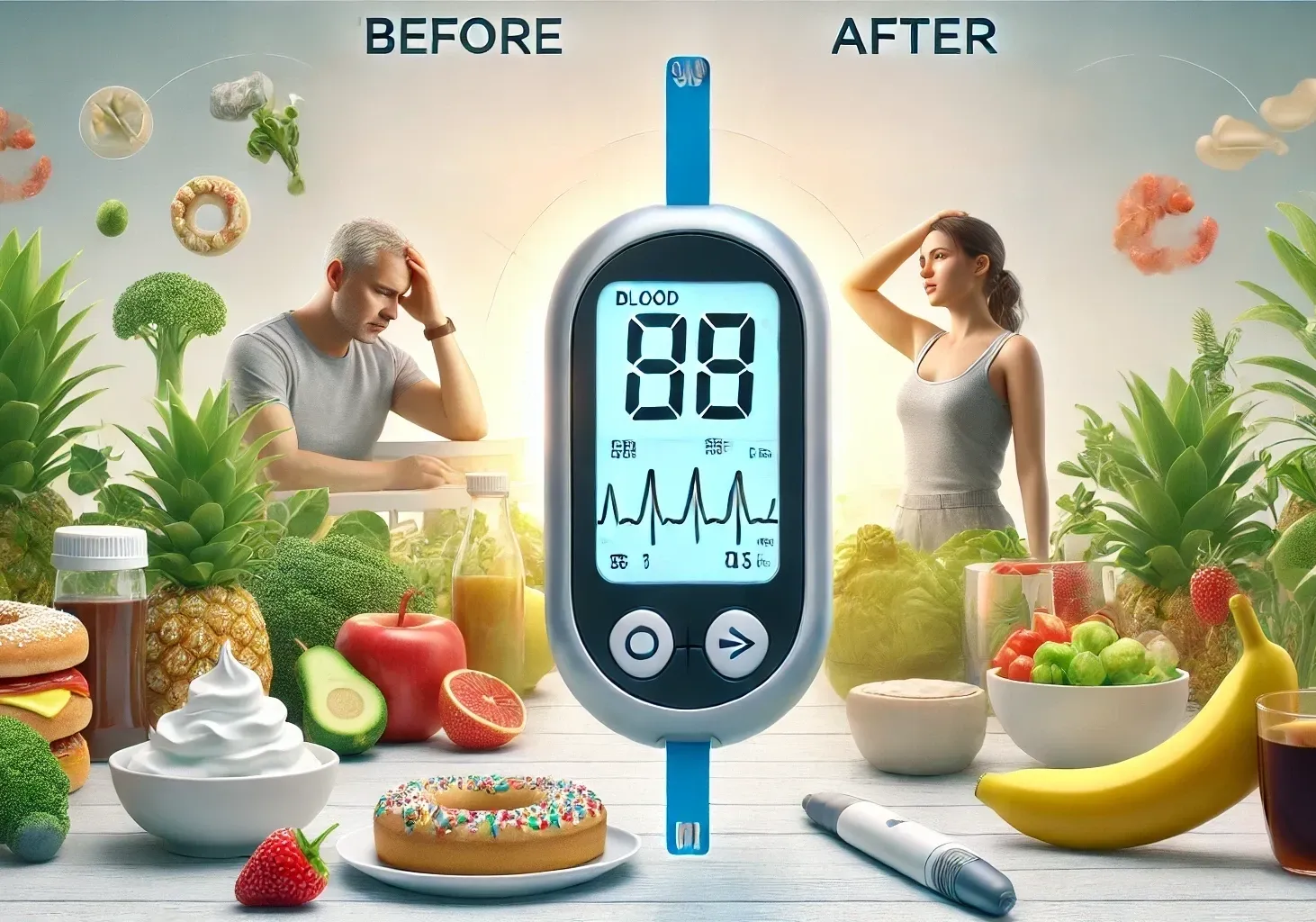VITAL HEALTH
MARKET

7 Blood Sugar Mistakes You’re Probably Making—and How to Avoid Them
The Silent Saboteur
Blood sugar, also known as glucose, plays a vital role in our daily lives. It’s the primary source of energy for our cells, yet when it's out of balance, it can wreak havoc on our health. For those over 35, maintaining stable blood sugar levels becomes even more critical. However, many of us unknowingly make mistakes that can lead to serious health issues like diabetes and heart disease. In this article, we’ll explore the seven most common mistakes people make regarding blood sugar and, more importantly, how to correct them.
Understanding the Basics of Blood Sugar
What Is Blood Sugar?
Blood sugar refers to the concentration of glucose in your bloodstream at any given time. Glucose is derived from the carbohydrates in your diet and serves as the body’s main fuel source. The pancreas produces insulin, a hormone that helps cells absorb glucose, thereby lowering blood sugar levels after eating.
Why It Matters
Maintaining balanced blood sugar levels is essential for overall health. Imbalances, whether too high (hyperglycemia) or too low (hypoglycemia), can lead to a range of health complications. Over time, consistently high blood sugar can damage your blood vessels, nerves, and organs, increasing the risk of developing chronic conditions like diabetes, heart disease, and even cognitive decline.
The 7 Worst Blood Sugar Mistakes
1. Skipping Breakfast
You might think skipping breakfast helps with weight control, but it can actually cause your blood sugar levels to spike later in the day. When you skip meals, especially breakfast, your body can overcompensate by increasing glucose production. This can lead to a cycle of highs and lows throughout the day.
How to Fix It: Start your day with a balanced meal that includes protein, healthy fats, and complex carbs. A simple breakfast of eggs, whole-grain toast, and avocado can set a stable foundation for the day.
2. Consuming Too Many Refined Carbs
Refined carbohydrates, such as white bread, sugary cereals, and pastries, cause rapid spikes in blood sugar. These spikes are often followed by a crash, leaving you tired and craving more sugar.
How to Fix It: Replace refined carbs with whole grains like oats, quinoa, and brown rice. These foods release glucose more slowly into your bloodstream, keeping your energy levels steady.
3. Ignoring Your A1C Levels
The A1C test measures your average blood sugar levels over the past two to three months. It’s an important marker for assessing your risk of diabetes. Many people don’t monitor their A1C levels regularly, which can lead to unchecked blood sugar issues.
How to Fix It: Make it a point to get your A1C levels checked at least twice a year. Aim for an A1C level below 5.7% if you’re not diabetic, or under 7% if you’re managing diabetes.
4. Not Drinking Enough Water
Dehydration can lead to higher blood sugar levels because less water in the bloodstream concentrates the glucose. This can also lead to kidney damage over time.
How to Fix It: Make hydration a priority. Aim for at least eight glasses of water a day, more if you’re active or live in a hot climate.
5. Overeating at Night
Heavy meals late in the evening can cause your blood sugar levels to rise and remain high throughout the night, disrupting your sleep and overall health.
How to Fix It: Eat smaller, balanced meals in the evening. Avoid high-carb, high-sugar foods close to bedtime. If you need a snack, opt for something light and nutritious like a handful of nuts or a piece of fruit.
6. Ignoring Stress Management
Chronic stress triggers the release of cortisol, which can increase blood sugar levels. Over time, this can lead to insulin resistance and higher risk of diabetes.
How to Fix It: Incorporate stress management techniques into your daily routine, such as meditation, deep breathing exercises, or yoga. Even a short walk in nature can help lower stress levels.
7. Neglecting Regular Exercise
Physical inactivity is a major contributor to poor blood sugar control. Exercise helps your body use insulin more efficiently, lowering blood sugar levels.
How to Fix It: Aim for at least 30 minutes of moderate-intensity exercise most days of the week. This could include walking, cycling, swimming, or strength training. Consistency is key.
Long-Term Strategies for Blood Sugar Control
Monitoring Your Blood Sugar Levels
Regular monitoring can help you understand how different foods, activities, and stress levels affect your blood sugar. Devices like Continuous Glucose Monitors (CGM) provide real-time data, allowing you to make informed decisions throughout the day.
How to Get Started: Talk to your healthcare provider about the best monitoring options for your lifestyle and health needs.
The Role of Diet in Blood Sugar Management
Your diet plays a crucial role in managing blood sugar levels. Focus on a balanced intake of fiber-rich vegetables, lean proteins, healthy fats, and whole grains. Avoid processed foods and sugary snacks, which can cause rapid spikes and crashes in blood sugar.
Pro Tip: Incorporate foods known to stabilize blood sugar, such as leafy greens, berries, nuts, seeds, and fatty fish like salmon.
Product Name: GlucoBerry™
Key Features:
- Combines maqui berry extract with chromium, biotin, and gymnema leaf for blood sugar support.
- Focuses on improving kidney function to enhance the "Blood Sugar Drain."
- Includes scientifically-backed doses of each ingredient.
Main Benefits:
- Supports healthy blood sugar levels by unclogging the blood sugar drain.
- Reduces blood sugar spikes after meals.
- Promotes long-term blood sugar health.
For more information, visit the GlucoBerry™ website.
A normal fasting blood sugar level is between 70-99 mg/dL. Post-meal levels should be less than 140 mg/dL.
Yes, physical activity increases insulin sensitivity, helping your muscles absorb glucose more efficiently.
It depends on your health status. If you have diabetes, your doctor may recommend checking it multiple times a day. If you’re at risk, consider regular monitoring to track trends.
Conclusion: Take Charge of Your Blood Sugar
Managing blood sugar is a continuous process, but with the right knowledge and habits, it’s entirely manageable. By avoiding the common mistakes outlined in this article, you can maintain stable blood sugar levels and improve your overall health. Remember, small, consistent changes can lead to significant results. Stay informed, stay active, and most importantly, stay healthy.
References:
American Diabetes Association. (n.d.). Blood Sugar Testing. Retrieved from https://www.diabetes.org
Mayo Clinic. (n.d.). Blood sugar testing: Why, when and how. Retrieved from https://www.mayoclinic.org
Harvard T.H. Chan School of Public Health. (n.d.). The Nutrition Source: Carbohydrates and Blood Sugar. Retrieved from https://www.hsph.harvard.edu




